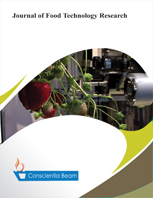The impact of soaking and drying soybeans on soyflour and the gluten-free cookies made from it
DOI:
https://doi.org/10.18488/jftr.v11i3.3872Abstract
This study investigated the effects of drying and soaking conditions on soy flour, as well as their influence on cookie quality. Two drying methods (70°C for 10 hours and 90°C for 6 hours) and three soaking conditions (ambient temperature for 24 hours, 80°C for 2 hours, and 121°C for 10 minutes) were evaluated. High-temperature soaking and drying resulted in darker flour with lower L* values (81.06–89.44) and higher a* values (-0.36–5.25) (p < 0.05). Scanning electron microscopy showed that the treated flour had rougher surfaces and protein clustering, which made it less foamy, and less emulsifying but better at water absorbing and holding. With heat treatment, the trypsin inhibitor content decreased significantly from 50.21 mg/g to 33.01 mg/g (p < 0.05). Gluten-free cookies made from soy flour treated at 80°C for 2 hours soaking and 90°C for 6 hours drying showed comparable spread ratios to wheat cookies and lower hardness. This treatment also allowed for higher protein (24.92%) and fiber (22.29%) content in the cookies. Therefore, soaking soybeans at 80°C for 2 hours, followed by drying them at 90°C for 6 hours, is recommended to produce soy flour suitable for developing high-protein, high-fiber, gluten-free cookies.

